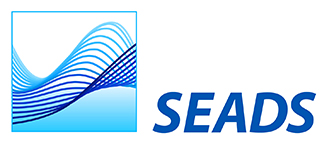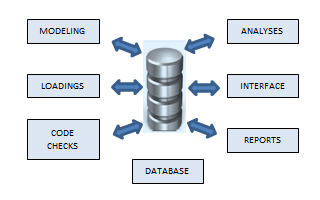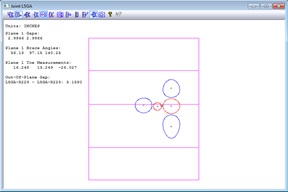Structural Engineering Analysis Design System

SEADS is a database program which allows structural analysis model information to be organized for easy access, management and updating. It facilitates the solution of different types of analysis using a single model.

The program’s operating system manages all communications between the user and the database. The user can create a structural model, generate and solve for applied loads, and check the adequacy of structural members according to specified codes. SEADS includes a very powerful command language that enables the engineer to create macros to automate analysis and design tasks as well as maintain the database facilitating the solution of different types of analysis using a single model. In addition, the program can generate 3D eccentricities and NC codes for tubulars used by lofting departments and cutting machines.
Main Features
Modeling

SEADS includes an interactive graphics modeler for creating and maintaining models as well as displaying analysis results. The following entities are available and can be uniquely identified using case sensitive alphanumeric names up to 14 characters long..
- Joints
- Members
- Finite Elements
- Material Properties
- Section Properties
- Constraints
- Load Cases
- Mass Cases
- Substructures
- Sets
- Components
- Equipment
- Appurtenance
Analysis & Design

SEADS can perform typical static analyses including soil-pile structure interaction. Stress results can be code checked using:
- API RP-2A and ISO standards for tubular member and joint checks
- AISC for steel shapes such as wide flanges and girders
- API Bulletin 2V, DNV 30.1, DNV RP C201 and ABS for stiffened plates
- API Bulletin 2U and DNV RP C202 for cylindrical shells.
Nonlinear Analysis
SEADS can conduct incremental nonlinear static analyses including geometric and material nonlinearities.
Dynamic Analysis
SEADS dynamic analysis capabilities include obtaining natural frequencies and mode shapes. SEADS can perform:
- Earthquake response spectrum analyses
- Frequency domain analyses
- Time domain linear dynamic analyses
- Regular and random waves
- Ground accelerations and time-dependent loads analyses
Fatigue Analysis
SEADS can perform spectral and discrete fatigue analyses for tubular joints and steel shape connections. The program is able to use principal stresses to conduct a fatigue assessment on Finite Elements. It can also conduct random wave fatigue analyses utilizing a rain-flow counting algorithm.
Interfaces
SEADS is able to interface with industry standard programs by importing and exporting models and loads.
Fabrication
SEADS can be used to assist in fabrication. The program can generate 3D eccentricities (in-plane and out-of-plane) to assist with lofting of tubular braces. In addition, the program can generate Numerical Control (NC) codes for cutting tubular braces using computerized cutting machines.
Worksheets
Various tasks such as load generation, structural analysis, code checks, etc. may be performed by executing commands in a worksheet. A worksheet is a window where SEADS commands are executed. The command language is free format and intelligible and can be used to program a sequence of tasks. This unique feature allows the user to have full control of analysis tasks by using logical and algebraic expressions, user defined variables and arrays, “if” statements and “do” loops. This capability facilitates the use of a single model to perform pre-service and in-service tasks.